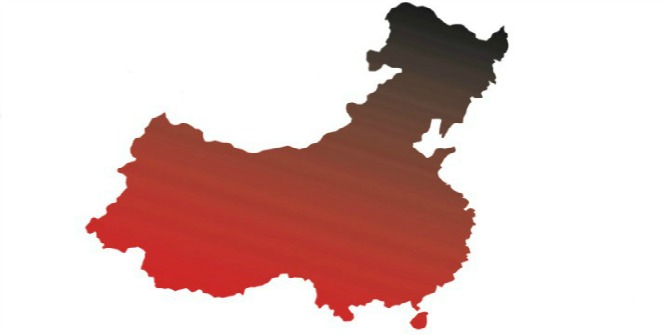In surveys, consumers affirm their preference for sustainable over conventional products. But in the supermarket, they often fall back on cheaper conventional alternatives. The higher price of sustainable products may explain the contradiction. Robert Wilken and David Bürgin write that partitioned pricing can make consumers aware of the ethical and sustainability benefits of fair-trade products, increasing their sales.
It is becoming increasingly urgent to drastically limit climate-damaging behaviour in all areas and to switch to sustainable behaviour – that is, behaviour that protects the planet and thus its inhabitants in the long term. Consumer behaviour – particularly in industrialised countries – must also change to make a significant contribution to sustainable development. It is true that there is a growing demand for sustainable products – for example, those that have a certified label and understand sustainability to mean not only climate friendliness but also social justice.
However, current demand falls far short of what is possible. In surveys, consumers repeatedly affirm the preference of sustainable over conventional products. But when they make their choice in the supermarket, they often fall back on cheaper conventional alternatives. In short, they often pay only a lip service to their preference for sustainable products, a phenomenon discussed in the scientific literature as the attitude-behaviour gap.
Sustainability has its price
A key problem we see in marketing sustainable products is their higher price compared to less sustainable conventional alternatives. As various studies have shown, there is indeed a higher willingness to pay for products certified by means of fair-trade, which must comply with various specifications regarding social, ecological, and economic criteria, than for products that are not certified in this way. However, the actual price difference compared to the conventional alternative often exceeds this additional willingness to pay, or the willingness to buy fair-trade products despite a higher price, decreases considerably as the price difference increases.
The higher price of fair-trade is a factor that inhibits or limits the market share of such sustainable products. At the same time, a higher price is justified and desirable from various points of view. Fair-trade is, among other things, about ensuring that producers (e.g., coffee farmers and plantation workers) are paid appropriately.
How can the attitude-behaviour gap be closed or at least reduced?
Our research is based on the idea that the role of price can be changed through the skilful use of price-based tactics. A price can be viewed by the consumer as a monetary sacrifice that must be made to purchase a product. At the same time, a price can also express quality and benefit. It is precisely this function of the price that must be emphasised in the marketing of fair-trade products: consumers must be made aware of the additional benefits of fair-trade products over conventional ones.
Paradoxically, this can be achieved through pricing – by using so-called partitioned pricing rather than combined pricing. Partitioned pricing means that the total price is broken down into mandatory price components: the consumer thus sees a base price of €7.98 for one kilo of coffee beans, e.g., as well as a fair-trade premium of €2 (instead of just stating the overall price of €9.98). This way, the communication of an additional product benefit takes place, which can be further strengthened by a complementary verbal message. In any case, consumers can better understand the price difference to the conventional alternative and are more willing to actually choose the fair-trade product.
In the case of combined pricing, on the other hand, only the respective total prices (fair-trade product and conventional alternative) are opposed to each other, and the impression of a greater monetary sacrifice for the fair-trade product prevails, while the additional benefit is pushed into the background.
Partitioned pricing works!
We conducted several empirical studies to test the effectiveness of this idea – increasing the market share of fair-trade products via partitioned pricing to highlight fair-trade benefits. The results show the following: offering the fair-trade product under partitioned pricing rather than combined pricing does increase consumers’ purchase intention over and behaviour regarding the conventional alternative. This is a cost- and time-efficient pricing mechanism to increase consumers’ choices of sustainable alternatives by communicating a benefit to them.
Interestingly, partitioned pricing is beneficial regardless of whether the fair-trade price component is additionally explained verbally or not, and regardless of whether the price premium is presented relatively (in percentage) or absolutely (in euros). Partitioned pricing is also effective independent of consumer attitudes towards or purchase frequency of fair-trade products and in different age, gender, and income segments. Further, the effect occurred in different product categories (chocolate; bananas) and had nothing to do with whether the product was a branded or no-name product. In one of our studies, where real purchase decisions were observed, we found that 20% more consumers chose the fair-trade product when the total price was split into a base price and a fair-trade component. Mind you, the price difference with the conventional alternative was still there – up to 50%!
It can also be applied easily
Partitioned pricing thus ensures that attention is paid to the additional benefits arising from sustainability-related product characteristics. More precisely, consumers classify the price itself as more transparent and thus as fairer. In a sense, partitioned pricing creates a feeling (price fairness), which fits in with the central characteristic of fair-trade products (fairness in the sense of social, ecological, and economic aspects).
Partitioned pricing is quite universally advantageous as a measure to increase sales and market share of fair-trade products and can therefore be applied widely. A complex and sometimes costly segmentation and separate addressing of segments is thus not necessary. Conversely, partitioned pricing is a measure that is easy to implement in the retail sector and can be applied quickly. It appeals to many consumers and is likely to lead to greater acceptance of fair-trade products across the board. In any case, partitioned pricing can help mainstream supermarkets contribute to improved social welfare and sustainability.
♣♣♣
Notes:
- This blog post is based on Increasing Consumers’ Purchase Intentions Toward Fair-Trade Products Through Partitioned Pricing, in Journal of Business Ethics, and How supermarkets can contribute to sustainable development through pricing, ESCP Business School impact paper series.
- The post represents the views of its author(s), not the position of LSE Business Review or the London School of Economics.
- Featured image by Juliamh123, under a CC-BY-SA 4.0 International licence
- When you leave a comment, you’re agreeing to our Comment Policy.





